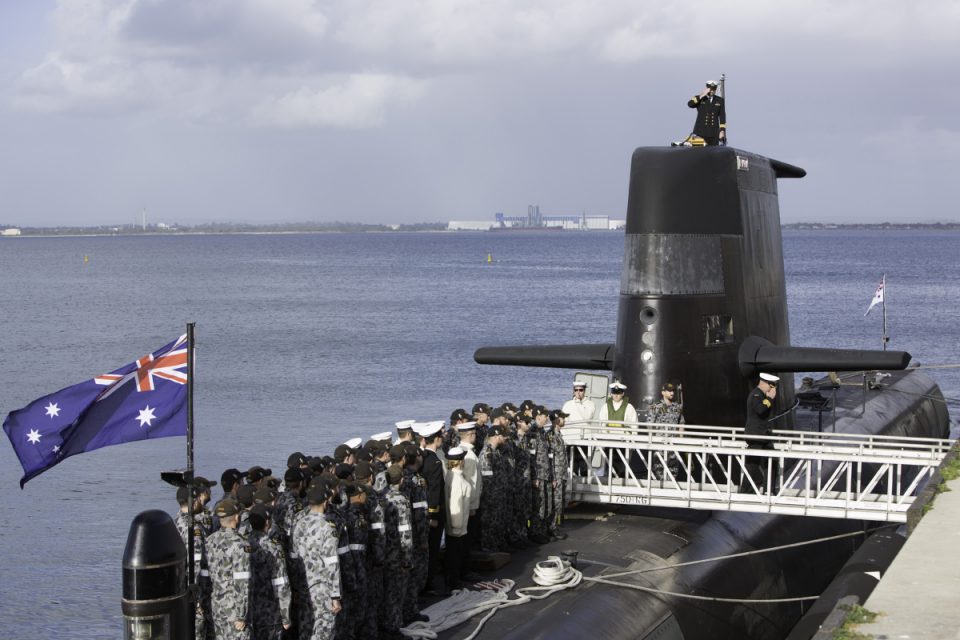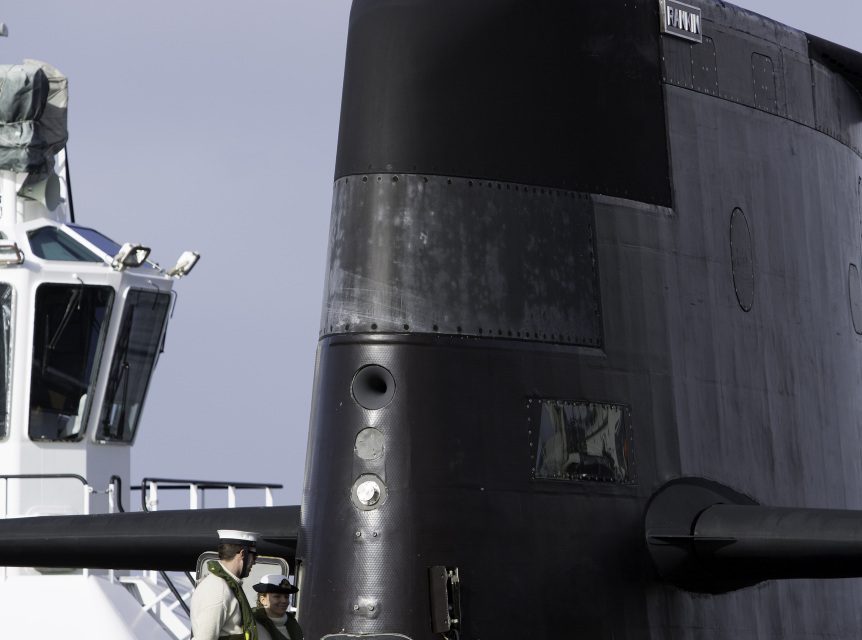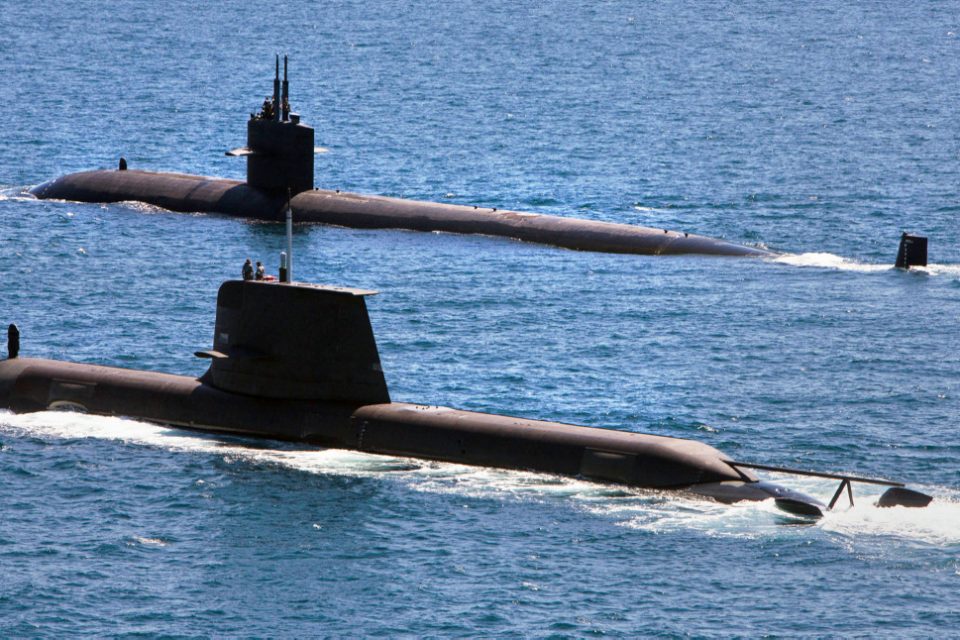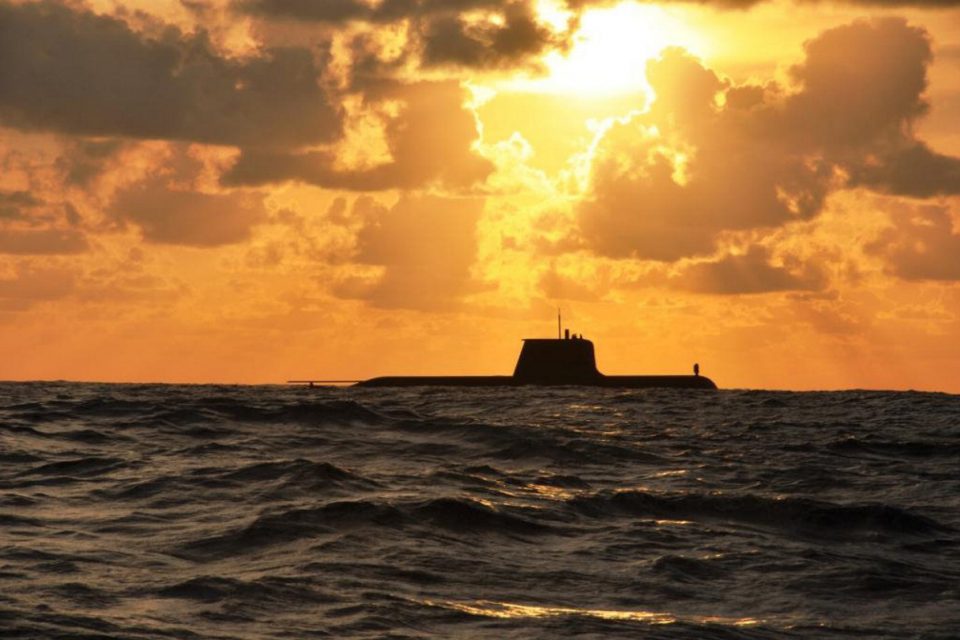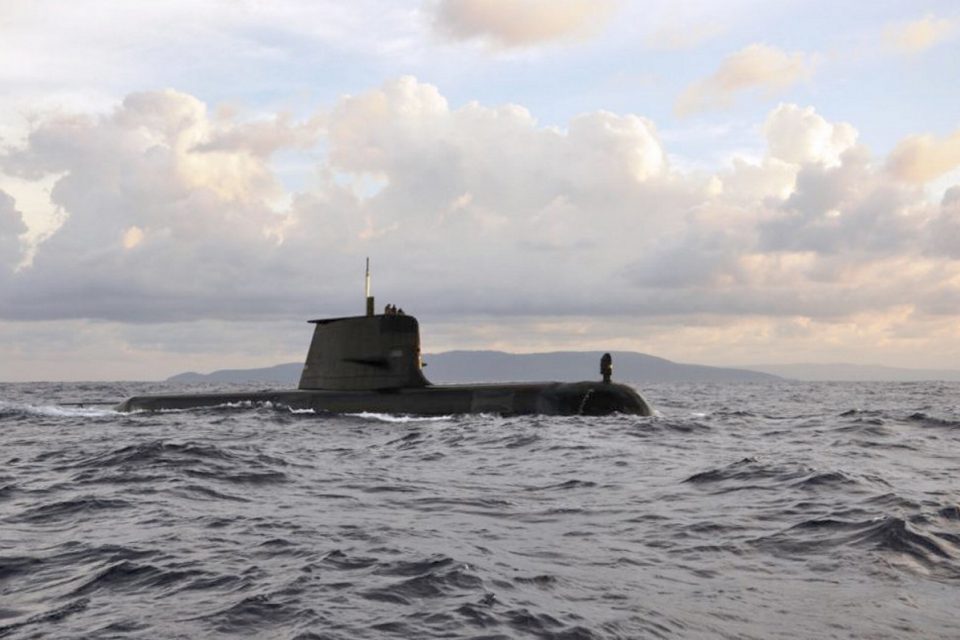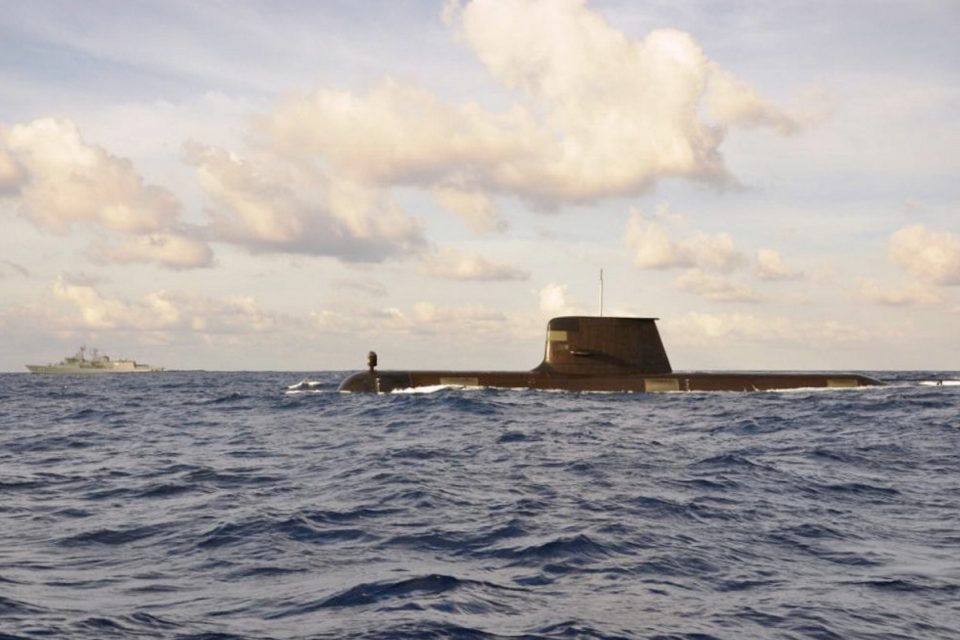2016-10-09 By Robbin Laird
Recently, the Australian Ministry of Defence signed a contract with DCNS for the construction of their new class of submarines.
In a statement issued on October 3, 2016 by the Australian Ministry of Defence, the contract was announced.
The Minister for Defence Industry, the Hon Christopher Pyne MP and the Minister for Defence, Senator the Hon Marise Payne today announced the next significant step in the building of Australia’s Future Submarines with the signing of the contract between the Government and DCNS to commence the design phase of the Program.
Mr. Pyne said the signing of the Design and Mobilization contract today with DCNS was ahead of schedule and not only represented another significant step along the path to developing a regionally superior Future Submarine but also was good news for Australian Defence industry.
“The signing ahead of schedule of the Design and Mobilization Contract with DCNS demonstrates the Turnbull Government’s commitment to ensuring the project is on track and that planning and preparations at each step are consistently thorough.
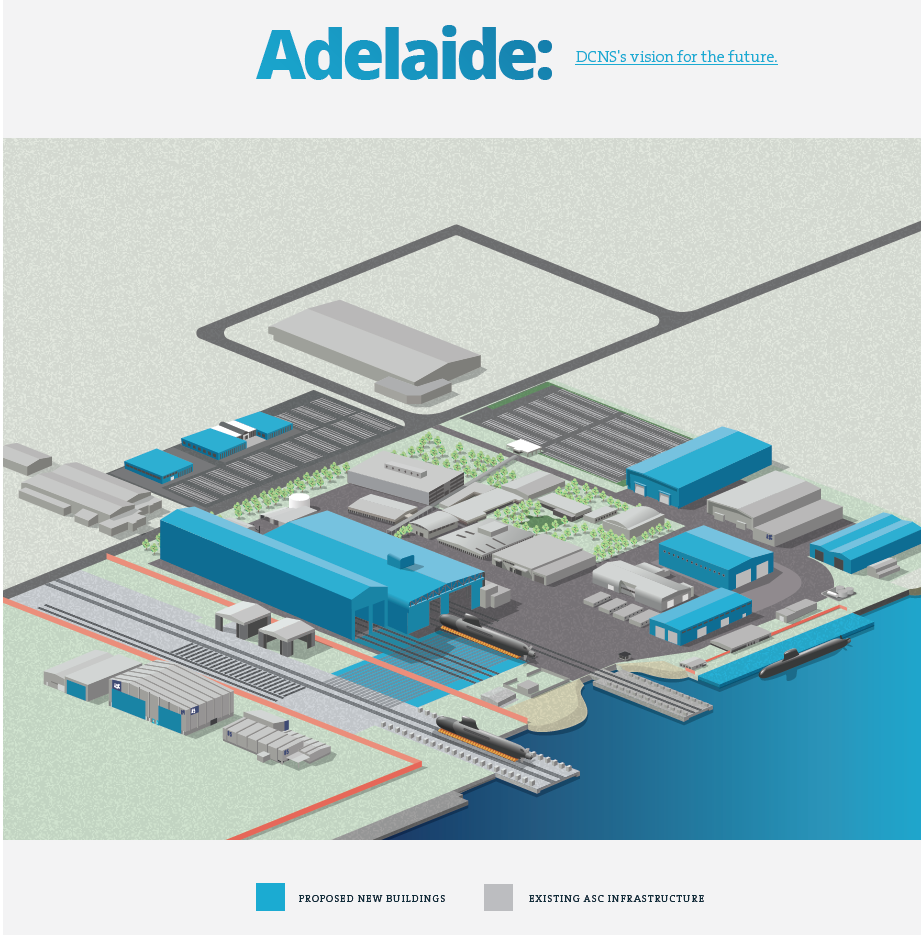
“Mobilization and design activities will mark the start of the Future Submarine Program, with work also commencing to maximize Australian industry involvement and early planning for the construction of the Submarines in Australia.”
“The timely start of design and robust planning for each phase of the Future Submarine Program are essential to success and for the benefits to start flowing to the Australian economy.
“Involvement of Australian industry in the Future Submarine Program is of vital importance to the construction and sustainment of the submarine fleet into the future, creating job opportunities across Australia.
Alongside construction of the future submarines in Adelaide, there is other highly technical work to be conducted in Australia. This will include the integration and testing of submarine systems, including the propulsion and combat systems for the submarines.”
Minister Payne said that the start of design marks a significant milestone in the development of regionally superior Future Submarine capability for Australia.
“The design phase will enable Australia, in partnership with DCNS and Lockheed Martin Australia, to design a submarine that meets our unique capability requirements, which include superior stealth and sensor performance,’’ Minister Payne said.
“This will be essential to meeting the security challenges we face over the coming decades as set out in the 2016 Defence White Paper.
“Our future Submarines will be an essential part of Australia’s naval capability and will provide us with a strategic advantage. Submarines are an effective deterrent, and make a meaningful contribution to anti-submarine warfare in our region.”
“We look forward to our cooperation with France and the United States to support the development of this most important Defence capability for our nation,’’ Minister Payne said.
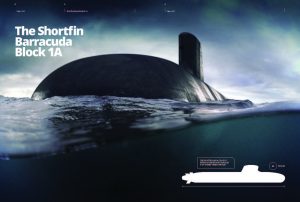
Lockheed Martin and its team will build the combat systems for the submarine.
Lockheed won in part because of its key role in the Virginia Class submarine and the innovative apps software approach the company has pioneered with the US Navy in upgrading that submarine combat system.
Australia is looking to shape software upgradeable systems across the ADF and key officials see the submarine program as a key contributor to this approach.
With the Virginia class program already demonstrating an apps based approach to upgradeability, the Australian Navy is very focused on such an approach for its submarines and new fleet in general.
The decision to select Lockheed Martin will see Australia share the same weapons system provider as the U.S. Navy, offering greater interoperability between the two allies.
“By partnering with an Australian-based company with strong links to the United States, we will ensure that we get the best Australian and U.S. technology, while ensuring that our sensitive technology is protected,” Minister for Defence Industry Christopher Pyne said in a statement.
http://uk.reuters.com/article/australia-submarines-idUKKCN11Z1XO
In an interview with DCNS conducted earlier this year, a senior DCNS official highlighted the importance of the submarine win and the innovative working relationship among France, Australia and the United States. In that interview, Xavier Mesnet, Marketing Director for submarines and surface ships international sales at DCNS, noted:
“The French Navy has worked extensively with the UK and US Navies, and it will be a major positive milestone and collaborative work to interface with a US combat system onboard a French submarine.”
In a follow up interview with a senior DCNS official in Canberra during my visit in August of this year, we discussed the approach, which DCNS was taking to the program.
In a meeting on August 11, 2016, I was able to sit down at the DCNS offices with Brent Clark, Director of Strategy at DCNS Australia. Clark is an experienced submariner with the Royal Australian Navy and after his service with the Navy went into industry where he continued to work on naval systems, including working for Thales Naval Systems in Australia.
When DCNS Australia was created in early 2015, Clark joined the company to help guide the competitive bid for what would become the winning submarine bid earlier this year.
We started by discussing why he believed that DCNS won the competition.
He emphasized that French domain knowledge in the submarine business and operations as well as the French commitment to sovereignty in the area had an important impact on Australian thinking.
Clearly, the Aussies wanted a submarine that operates throughout the Pacific and one, which their industry could build and support in a sovereign manner.
“There are actually only two countries in the West who still understand what sovereignty is and requires in the development and manufacture of military platforms and that is the United States and France.
If Australia wants to learn what sovereignty in this area means, they clearly have to work with a nation which does know and exercises such capabilities.”
And given that the United States does not build diesel submarines, the only other real candidate in Clark’s view was France and hence DCNS.
The competition was among Japanese, German and the DCNS platform.
And of these, only the French company had long standing experience in operating a submarine at the range and distance, which Australia wanted.
“The French had been operating submarines in a very tactical fully deployed way for a very long period of time which is in clear contrast to either Japan or Germany currently. France deploys its submarines into the Western Indian Ocean and operates on long deployments similar to Australia or the United States.
In contrast, Germany and Japan operate their submarines at sea for about a month at a time. And being able to support and sustain longer deployments is crucial to Australia for its next generation submarine as well.”
We then discussed the impact of the Collins experience on how Australia is considering its next generation submarine.
Clark underscored that Collins is a one off variant of a Swedish submarine and as such meant that Australia had to operate in a sui generis space with regard to the evolution of its Collins class submarine.
And the question of working with a force with built-in long distance operating experience was highlighted as well. Clark noted: “we had a Swedish exchange officer come to sea with us when I was onboard a Collins-class submarine and we deployed to New Zealand.
Day 28 of the deployment he walked into the wardroom and stated that I’ve now set a record as a Swedish submariner for the most continuous days at sea.
And we all looked at him and went “we’re only at sea for 28.”
Clark contrasted the experience with the Oberon-class submarine, which preceded the Collins in that there were 19 different countries using Oberon-class submarines, which constituted an Oberon-class submarines user group.
This meant that Australia could leverage other nation’s operational experiences.
“With Collins, we ended up operating six boats by ourselves with very little reach back to Sweden because they didn’t operate the same way and they hadn’t operated that submarine either. So it took Australia an awful long time to realize what that means.”
Clearly Australia does not want to pursue a sui generis program with a country without long distance operating experience.
The DCNS offering allows Australia to draw upon French operational experience and evolving technologies to be part of a larger submarine enterprise as well as being able to leverage U.S. combat systems technology, with the combat systems being American.
In other words, much like the rest of the ADF which is moving towards buying platforms where they are part of global fleets or systems, the Navy wanted to ensure that they did the same with regard to their new submarine class.
And DCNS brings to the Australian Navy significant experience with regard to building and sustaining submarines in the manner in which Australia will want to operate in the extended battlespace.
“We were very confident of the operating cycle of the submarine.
We’re very confident of the maintenance of the submarine and, and the maintenance philosophy.
And the French maintain their sovereignty exactly in the same sort of cycle that the Australians wanted.”
We then discussed the track record of DCNS in transferring the kind of technology Australia wants to build the new generation submarine and the ability to leverage what Australia has already invested in the infrastructure at Adelaide.
“The company is very good at transferring technology, which was a requirement for Australia.
The Brazilian example was important for Australia as in that case DCNS provided the Brazilians with the ability to create a sovereign production capability for their Scorpion class submarines.
You don’t have to go back to France for anything if you don’t wish to.”
DCNS will be working with Australia to build a 21st century infrastructure for the build and the sustainment of the submarine.
DCNS builds submarines differently than do the Japanese and Germans.
“We vertically integrate sections as opposed to horizontally integrate them for a whole range reasons, including occupational health and safety.
Having worked in a variety of shipyards, one of the big problems you have with shipyards is lots and lots and lots and lots of eye injuries from dust and rubbish going to people’s eyes.
That’s because welders end up welding on their back.
The way we build is basically the welders stand up. So that’s it. It means you end up with a taller which is more efficient with more productivity as well.”
A key part of the program is to shape a new way to build ships in Australia, which will almost certainly happened with the new air warfare destroyer as well.
After the design contract is signed between DCNS and Australia in the Fall, Australian technicians will move to Cherbourg and start the process of preparing for the technology transfer necessary to build the new submarine in Australia.
Over time, the French manpower involvement in the program will go down as the Australians ramp up their manpower numbers in the submarine build process.
“Where the requirement for, for French supervision starts to end really depends on how quickly we can get the Australian workforce skilled, and productive.”
And DCNS Australia is prepared to work closely with the Combat Systems Integrator (CSI), which at that time was yet to be downselected, by the Commonwealth of Australia, but now has been designated as Lockheed Martin.
“We have said the three entities – DCNS, the CSI and the Commonwealth — must work together to deliver a whole warship performance.
We are going to co-contract with the CSI for performance.”
Clark contrasted the evolving approach with that which characterized the Collins class experience.
“If we go back to the combat system on Collins which was basically supplied as government-furnished equipment, GFE, to the builders, the builder had no ability to interact. Boxes would turn up and the builder was told to install them.
The builder did that.
But of course when the combat system was turned on, it didn’t work properly.
We consistently and constantly said during the competitive evaluation process that we could not work any other way but collaboratively with the CSI.
And that clearly is the way ahead for a successful program.”
Editor’s Note: The submarine is clearly a key platform contribution to the evolving air-sea integration approach discussed in August at the Williams Foundation seminar.
In an interview conducted after his presentation at the Williams Foundation seminar, Chief of Navy, Vice Admiral Barrett outlined his thinking about the way ahead with regard to ship building and the submarine.
Question: Clearly, building a sustainable navy from the outset is crucial to your design effort.
How do you view the challenge of building a more sustainable navy from the outset?
Vice Admiral Barrett: “It is crucial to deterrence.
If your ships are not operating at sea they will have little effect.
“For example we have changed our approach to the Collins submarine largely around sustainment and working more openly with industry to achieve much greater at-sea operational tempos.
“We have put in place an enterprise approach, which focuses on availability of submarines; Industry and Navy are working closely together now to achieve that core objective.
“I’ve got industry keenly interested in the results of what the submarines do when they leave port and go on operations. And we’ve had a dramatic turnaround in submarine availability as partnering has improved.
“For me, deterrence, lethality, availability, sustainability, and affordability are highly interrelated for a Navy and its combat performance.
“And clearly as we design new ships, designing in more sustainable systems and ships is crucial.”
Question: Wedgetail shows an interesting model, namely having the combat squadron next door to the Systems Program Office.
This facilitates a good working relationship and enhances software refresh as well.
You have something like this in mind for your ship building approach.
Could you discuss that approach?
Vice Admiral Barrett: “We do and are implementing it in our new Offshore Patrol Vessel program. And with our ‘ship zero’ concept we are looking to integrate the various elements of operations, upgrades, training and maintenance within a common centre and work flow to get greater readiness rates and to enhance an effective modernization process as well.
“We are reworking our relationship with industry because their effectiveness is a key part of the deterrence process. If I have six submarines alongside the wharf because I can’t get them away, they are no longer lethal and they are no longer a deterrent force.
“Again, as an example we have dramatically improved availability by building maintenance towers alongside the submarine—rather than the previous way that it was done, where people arrived into that one gangway under the submarine then dispersed to do their maintenance work—is an example of how we need to work.
The slideshow above highlights the Collins Class submarines and the photos are credited to the Australian Ministry of Defence.
For the report on new approaches to air sea integration see the following:


